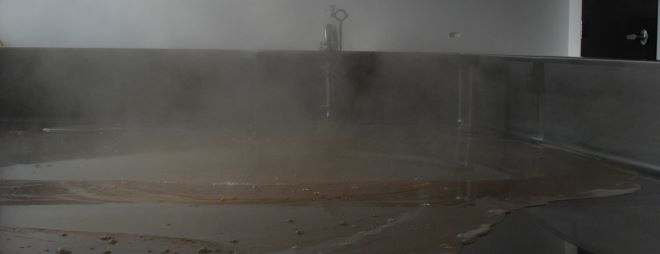
Jay Brooks broke a bit of news Thursday in his Flagship February post about Anchor Brewing. There is a new history of the brewery on the way that includes hundreds of archival photos.
The official publication date is May 2, 2023. That seems like a long time to wait to see if the book will provide a definitive reason why steam beer was/is called steam beer. Here are some of the contenders (I kind of like the “Doctor Steam” version myself):
– What looked and sounded like steam was generated by the pressure resulting from highly carbonated kegs.
– Steam hung above rooftop vessels that initially cooled the beer.
– Pete Steam invented the process.
– It originated with “Doctor Steam” (whose first name has been given variously as Frank, Heintz, or Charles).
– German brewers would have been familiar with Dampfbier (“steam beer” in German), itself a hybrid.
– The first brewer to make it, according to his son, named it “mission steam beer, after the (California) missions.”
The photo at the top is from Dovetail Brewery in Chicago. Numerous American breweries have installed coolships (or koelschip, to use the spelling preferred at Russian River Brewing Company) since Allagash Brewing did in 2008. They use them to make spontaneously fermented beer.
Dovetail produces both spontaneously fermented beers and lagers with its coolship, reaching back to a process used by brewers of lagers in Germany and West Coast steam beer brewers in the 19th century. Charles Kummerlander described production in a paper presented to the American Brewing Academy.
Kummerlander described a process in which after the wort was boiled, run into a hop jack, then pumped to a surface cooler on the roof (see “why it was called steam beer” No. 2). After the wort cooled to between 56° F and 62° F, in five to eight hours, it was run into a fermenting tub. When it reached high krausen (taking about 12 to 18 hours by one account, 24 to 30 in another) it was transferred into the clarifiers (shallow vessels, between eight and 12 inches high, and not much different than a surface cooler).
Fermentation time varied greatly, from two days to five. From the clarifier it was racked into half barrels and krausened to reach a pressure of 40 to 70 pounds per square inch (see “why” No. 1).
Dovetail’s lagers spend minutes in the coolships, rather than hours. The wort enters at boiling temperatures, and departs scaling (in the range of 160° F to 170° F). Partners Hagen Dost and Bill Wesselink think the result is a more harmonious beer.